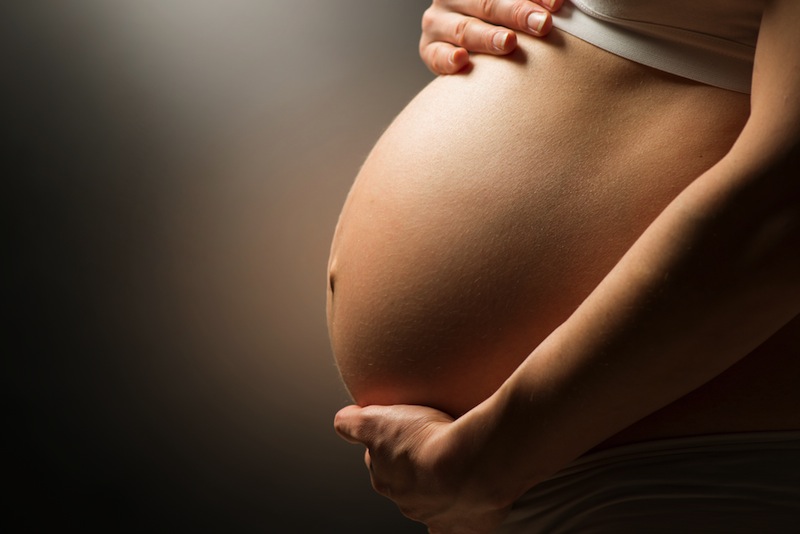Vaginal delivery after C-Section often safe

Women who've had cesarean sections don't usually try to give birth vaginally with their next children. But a new study finds that those who do may have a relatively low rate of complications.
Researchers analyzed information from birth certificates from 41 states in 2013, which represented 90 percent of all U.S. births in that year.
Most women who had a previous C-section scheduled another C-section for their subsequent birth, but about 20 percent attempted to give birth vaginally, which researchers call a VBAC (vaginal birth after cesarean). Of these, about 70 percent had a successful vaginal delivery, whereas the other 30 percent wound up needing a C-section anyway, according to the report, from the Centers for Disease Control and Prevention.
This means that, all told, among the women who'd already had a C-section for a previous birth, 90 percent underwent a repeat C-section, the report found.
But the women who did wind up having VBAC deliveries generally had lower rates of complications, such as the need for blood transfusions, unplanned hysterectomies or admission to the intensive care unit (ICU), compared with those who scheduled a C-section, the researchers found.
Related: Vaginal Birth vs. C-Section: Pros & Cons
Still, VBAC deliveries can have risks. Among the women who attempted a VBAC delivery, but ended up needing a C-section to give birth, the rate of uterus rupture was seven times higher than among those who scheduled a C-section. (In some cases, a C-section may be needed because the uterus ruptures during an attempted vaginal delivery.)
Sign up for the Live Science daily newsletter now
Get the world’s most fascinating discoveries delivered straight to your inbox.
Dr. Eva K. Pressman, chair of the department of obstetrics and gynecology at the University of Rochester in New York, who was not involved with the study, said there are a few reasons why women often don't attempt vaginal delivery after a C-section. One is that smaller hospitals often don't have the staff needed to offer VBAC. (The hospital needs an operating room and staff available in case a woman requires an emergency C-section.) In other cases, women will schedule a repeat C-section for convenience.
And some women may not be able to give birth vaginally after a C-section. For example, if they needed a C-section with their first child because the baby was too big to deliver vaginally, and their next child is about the same size, they would not be good candidates for VBAC, Pressman said.
"The reason that the VBAC success rate is relatively high is related to choosing the best possible candidates," Pressman said. If everyone who had a previous C-section tried to have a VBAC, "probably less than half of them would be successful," Pressman said.
But some women who could be candidates for VBAC still schedule C-sections, Pressman said. "I think some of it is based on nonmedical decision-making, convenience or fear of labor, in patients that would be good candidates," Pressman said.
Dr. Madeleen Mas, a pediatric cardiologist at Nicklaus Children's Hospital in Miami, agreed that some women who might want or benefit from VBAC aren't aware of this option.
Women should speak with their doctors about whether they can attempt to deliver vaginally after a C-section, Mas said. In particular, a woman would be a good candidate for VBAC if her current pregnancy doesn't have the same risks as her previous pregnancy — for example, if the fetus in her previous pregnancy was in a breach position, but her current pregnancy is not, Mas said.
The study also found that women were more likely to need a blood transfusion or to be admitted to the ICU after a first C-section, compared with women who had a vaginal delivery or a repeat C-section. Rates of uterus rupture and unplanned hysterectomy were highest among those with repeat C-sections.
In general, the findings agree with previous studies that show that women who have C-sections tend to have more complications than those who have vaginal deliveries. Part of the reason for this is that C-sections are needed when problems occur in a pregnancy, Mas said.
But C-sections themselves also come with longer hospital stays, and have a risk of infection, Mas said. Babies born by C-section also have a higher risk for respiratory problems, even if the children are born at term, Mas said.
The researchers noted that in previous studies that use medical charts as a way to collect data, there have been problems identifying cases of ruptured uterus. This is because the condition can be confused with a less serious condition called uterine dehiscence. It's not known whether this same problem would apply to the current study, which used data pulled from birth certificates.
The study is published today (May 20) in the CDC's National Vital Statistics Report.
Follow Rachael Rettner @RachaelRettner. Follow Live Science @livescience, Facebook & Google+. Original article on Live Science.

Rachael is a Live Science contributor, and was a former channel editor and senior writer for Live Science between 2010 and 2022. She has a master's degree in journalism from New York University's Science, Health and Environmental Reporting Program. She also holds a B.S. in molecular biology and an M.S. in biology from the University of California, San Diego. Her work has appeared in Scienceline, The Washington Post and Scientific American.
Is getting an IUD painful?
'Useless' female organ discovered over a century ago may actually support ovaries, study finds









